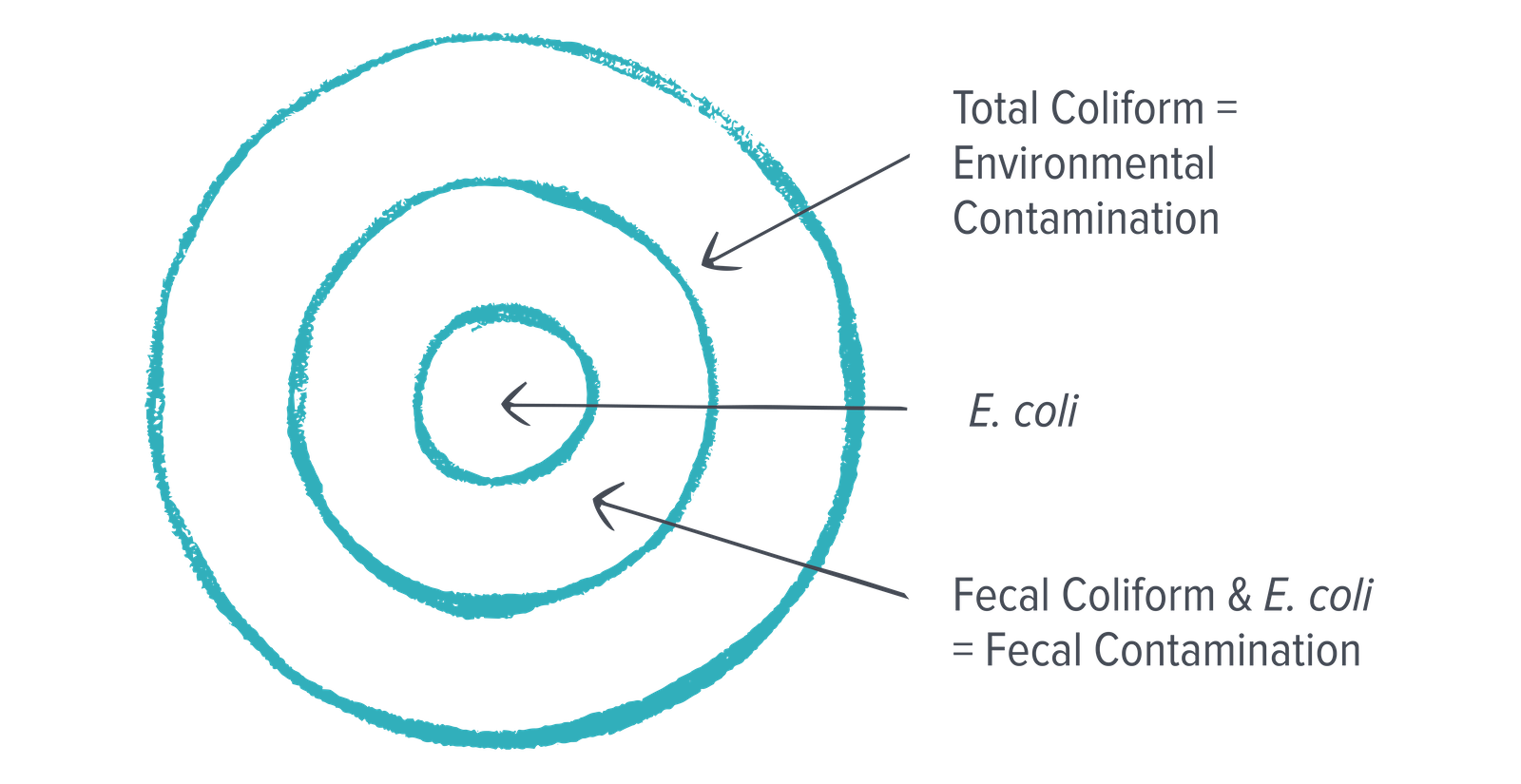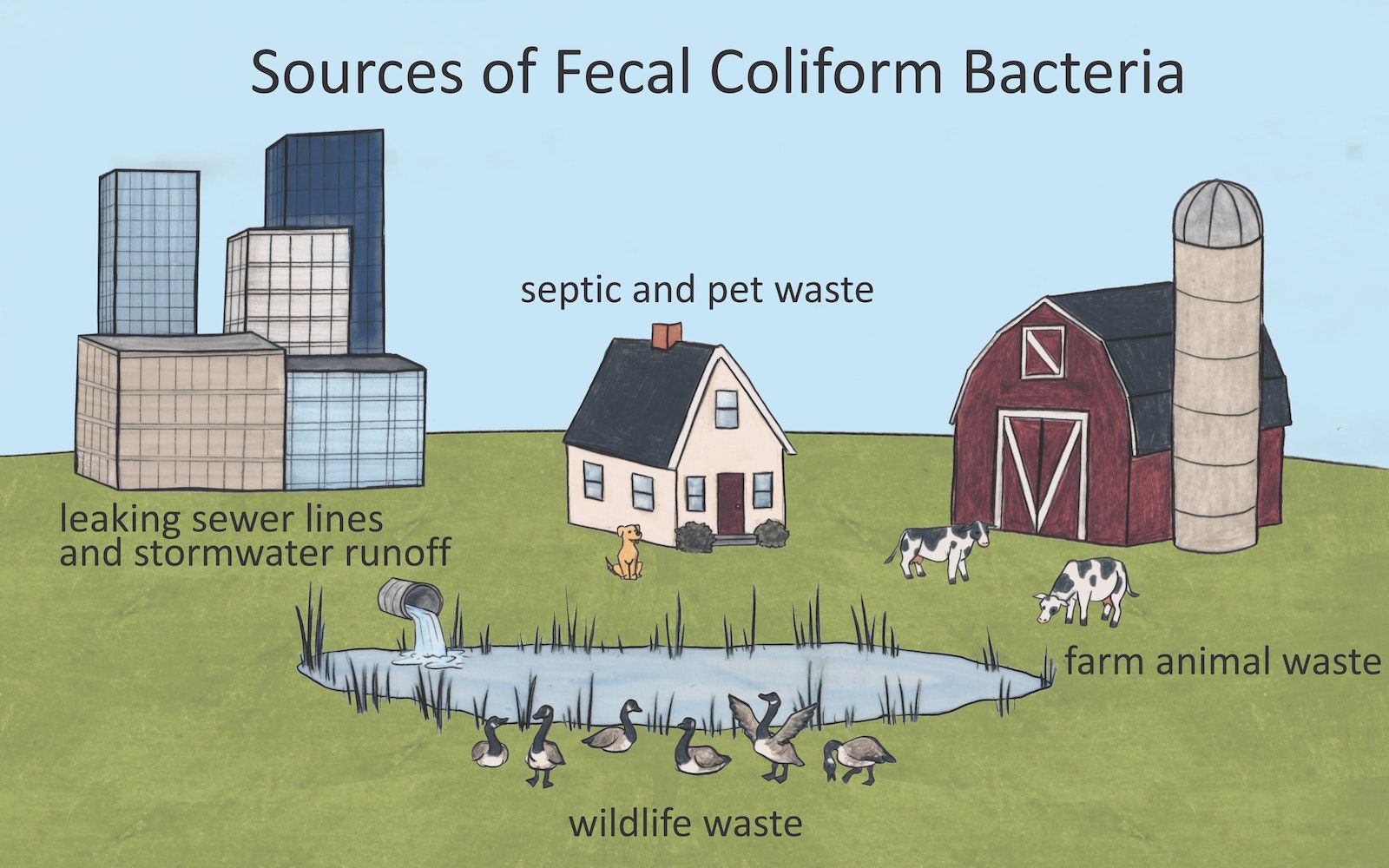Regional recreational water quality guidelines for average E. coli abundance vary across Canada, ranging between about 100-200 per 100 mL of water. There are even lower thresholds for drinking water (set nationally), where no E. coli should be detected per 100 mL of water.
What is it?
Coliform bacteria are a type of bacteria mainly found in the intestines of people and warm-blooded animals (and excreted in feces). They are also found in soils. There are different measures of coliform bacteria including total coliform (which includes all types), fecal coliform, and Escherichia coli (E.coli), a type of fecal coliform.
Numbers of fecal coliform bacteria (including E. coli) in water are influenced by human or animal waste entering the water, such as through farm runoff and poorly treated human sewage. Fecal coliform bacteria can also come from droppings from birds like ducks and geese.

Total coliform is a measure of all types of coliform bacteria, including fecal coliform. E. coli is a specific type of fecal coliform bacteria and is of particular concern because some strains (e.g., E. coli O157:H7) can make people sick.
Why does it matter?
The detection of fecal coliform bacteria (including E. coli) in water indicates recent fecal contamination. This suggests that other fecal pathogens (e.g., parasites and viruses) may be present, which can pose a health risk to people.
The amount of E. coli in lakes and rivers is often used to assess the safety of water for recreational purposes such as swimming, boating and fishing. It is also an important measure of drinking water quality.
Fecal coliform bacteria typically don’t survive more than a few days in a river or lake. If there are infrequent inputs of fecal coliform (e.g., following heavy rains that cause stormwater and agriculture runoff) then we would expect to see high bacteria counts for a few days and low counts the rest of the time.
If fecal coliform levels are consistently high, it indicates that the source of contamination is entering the water regularly.

How is it measured?
Coliform bacteria are measured from a water sample sent to the lab for analysis. Some tests will simply report whether it is present or not, but it is also possible to estimate the number of bacteria by allowing them to grow. The coliform count is often reported as the number of bacterial colonies that grow per 100 millilitres (mL) of water.
